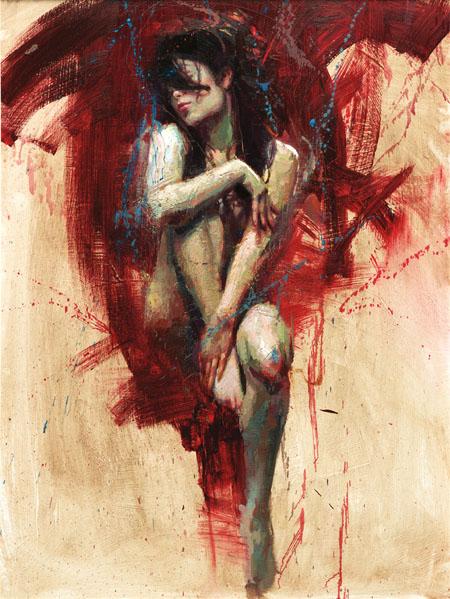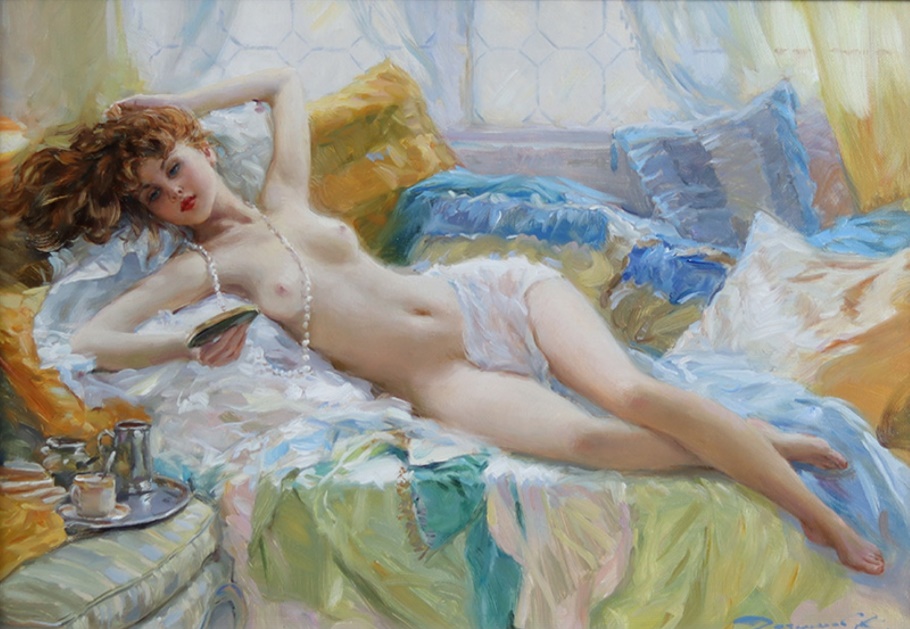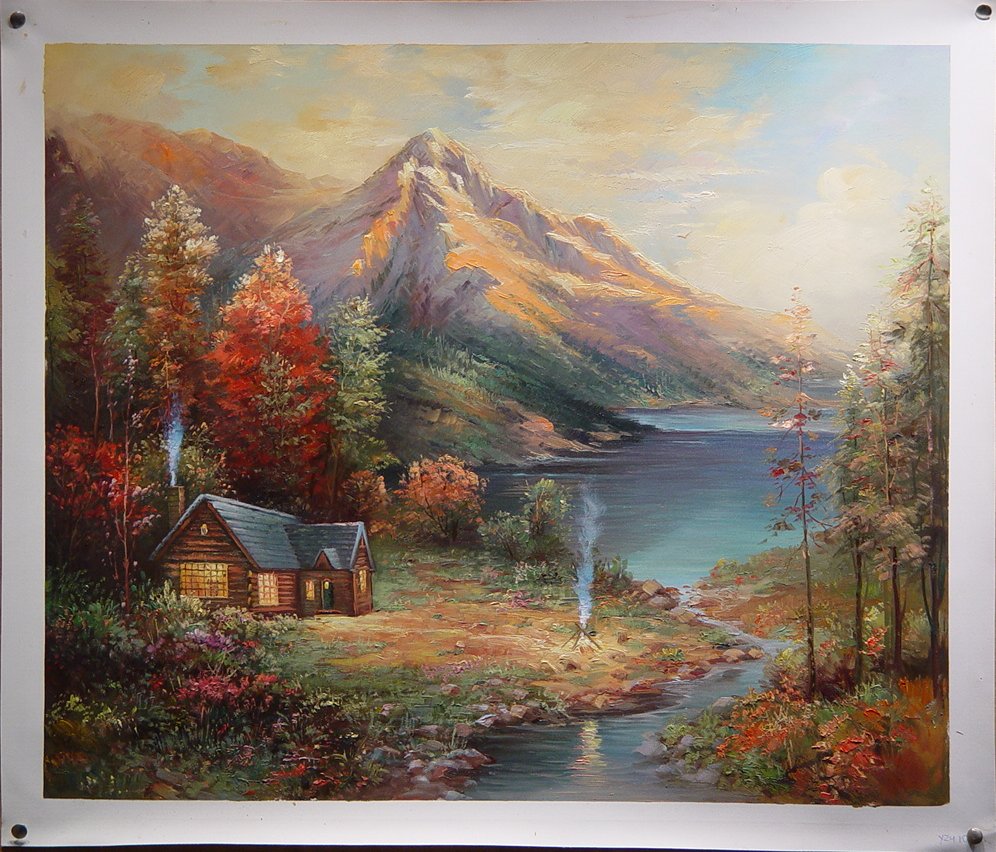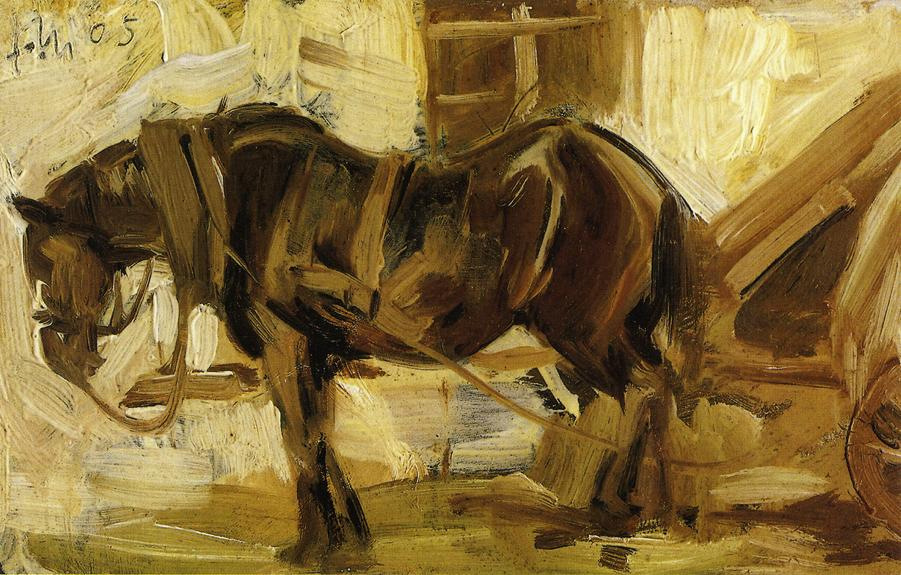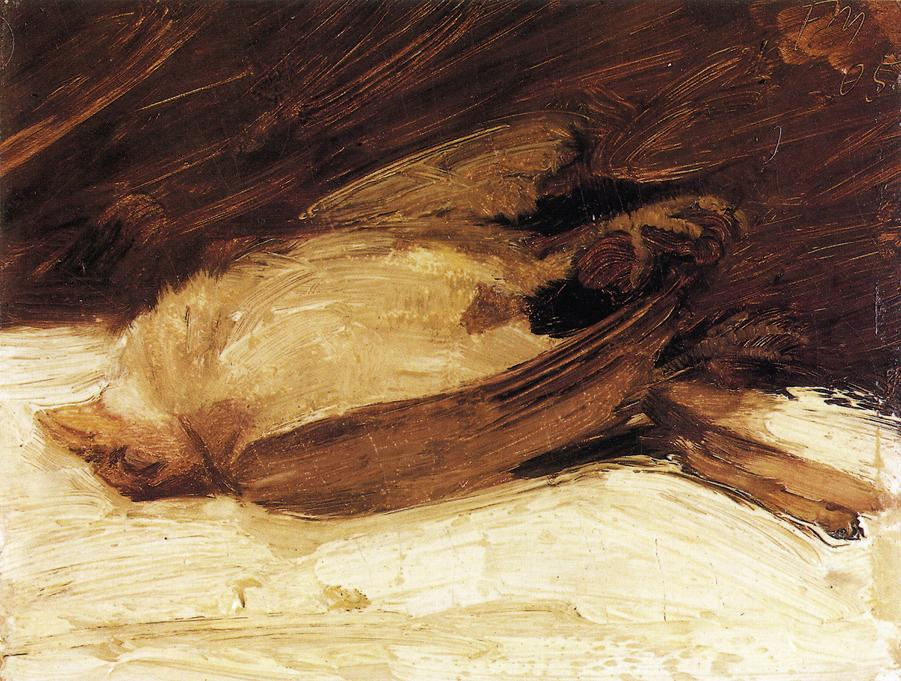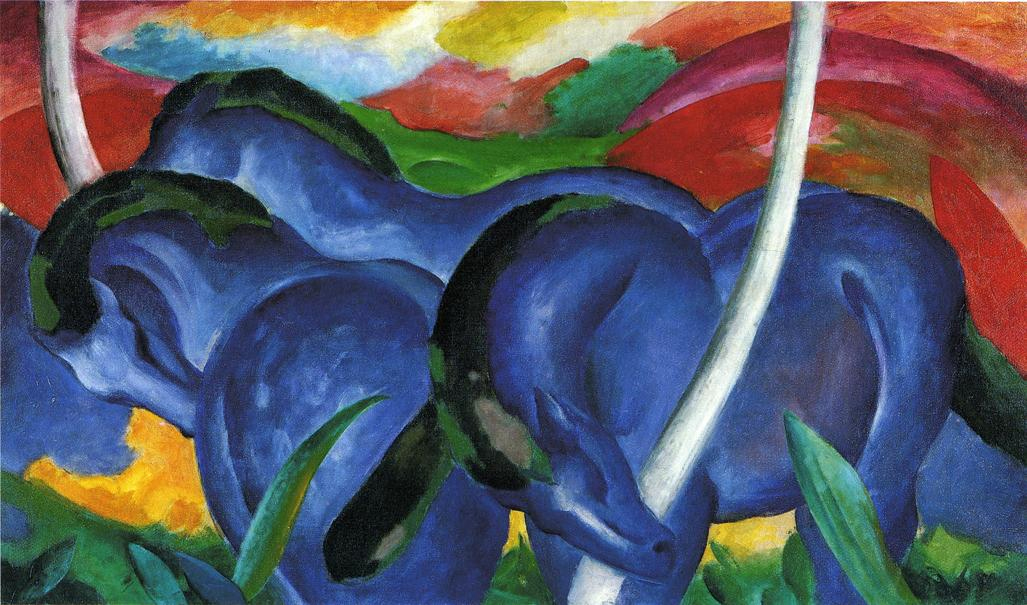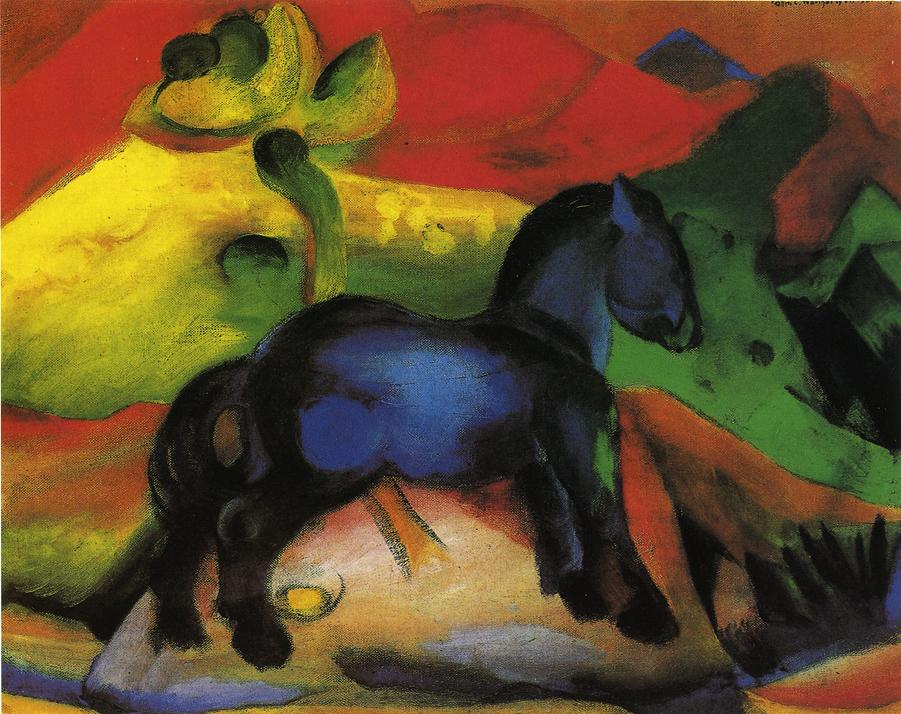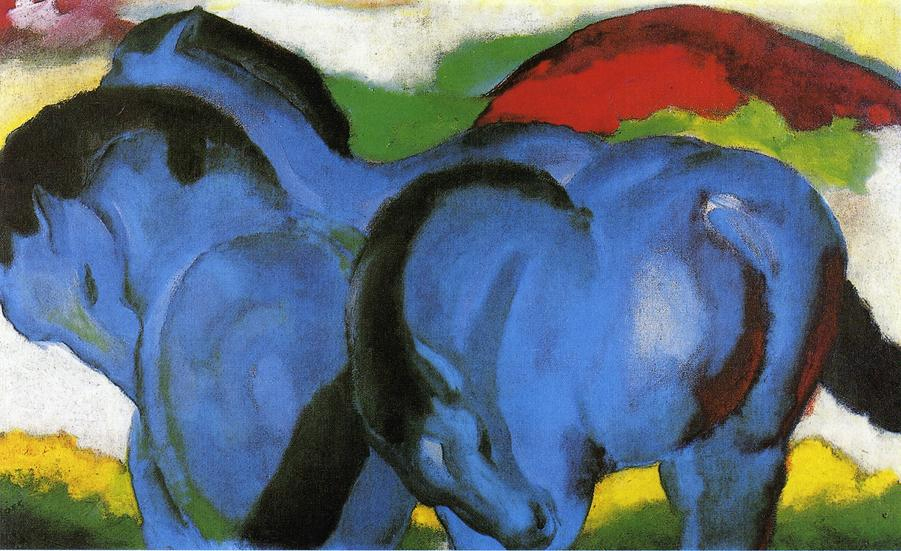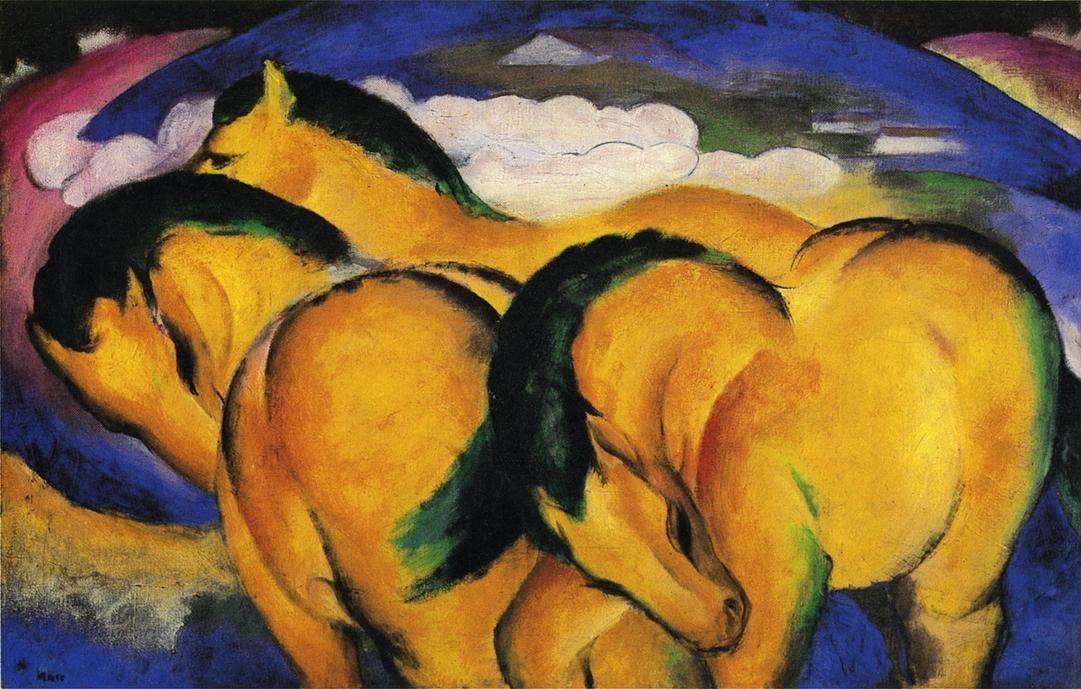Franz Marc (February 8, 1880 – March 4, 1916) was a German painter and printmaker, one of the key figures of the German Expressionist movement. He was a founding member of Der Blaue Reiter (The Blue Rider), a journal whose name later became synonymous with the circle of artists collaborating in it.
Style
Marc made some sixty prints, in woodcut and lithography. Most of his mature work portrays animals, usually in natural settings. His work is characterized by bright primary color, an almost cubist portrayal of animals, stark simplicity and a profound sense of emotion. His work attracted notice in influential circles even in his own time. Marc gave an emotional meaning or purpose to the colors he used in his work: blue was used for masculinity and spirituality, yellow represented feminine joy, and red encased the sound of violence. After the National Socialists took power, they suppressed modern art; in 1936 and 1937, the Nazis condemned Marc as an entarteter Künstler (degenerate artist), and ordered that approximately 130 of his works be taken from exhibit in German museums.
Franz Marc's best-known painting is probably Tierschicksale (also known as Animal Destinies or Fate of the Animals), which hangs in the Kunstmuseum Basel. Marc completed the work in 1913, when "the tension of impending cataclysm had pervaded society", as one art historian noted. On the rear of the canvas, Marc wrote, "Und Alles Sein ist flammend Leid" ("And all being is flaming agony"). Conscripted during World War I, Marc wrote to his wife of the painting, it "is like a premonition of this war--horrible and shattering. I can hardly conceive that I painted it." Buy led light bulbs, Buy led lights as a replacement for tungsten filament lamps.
